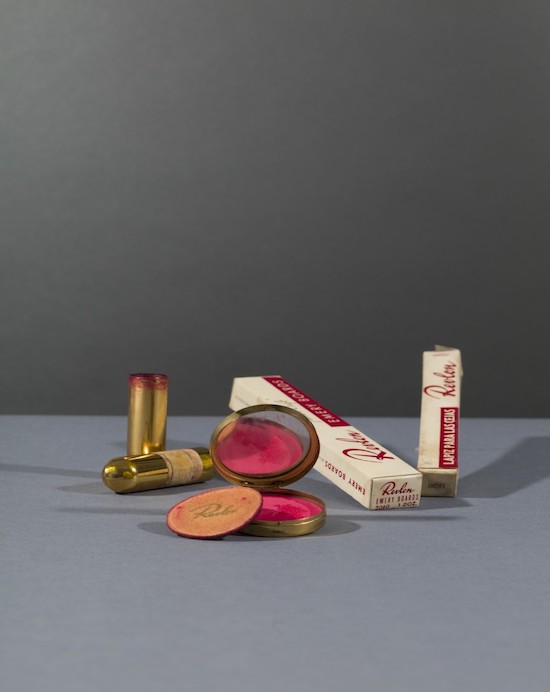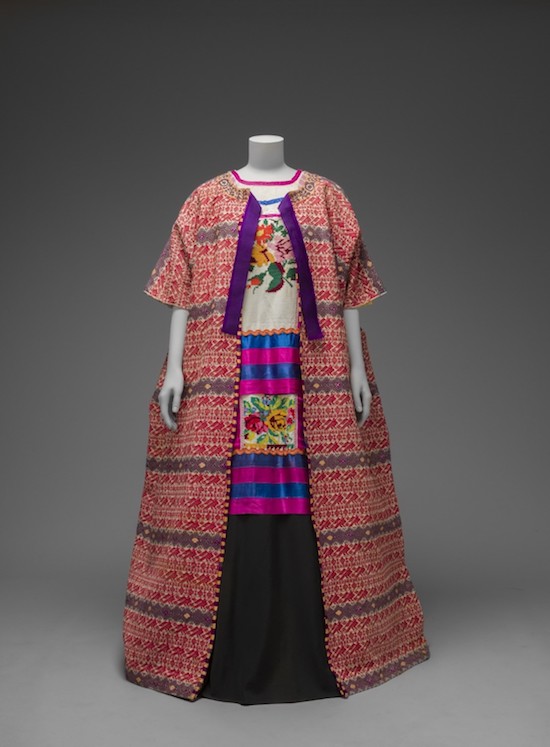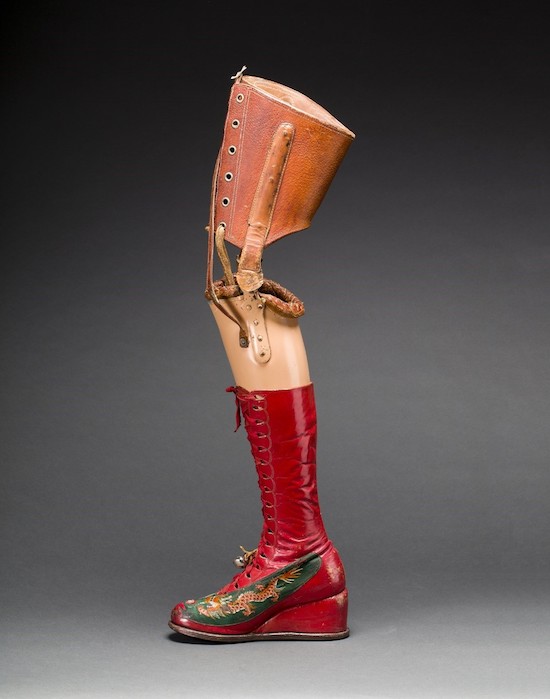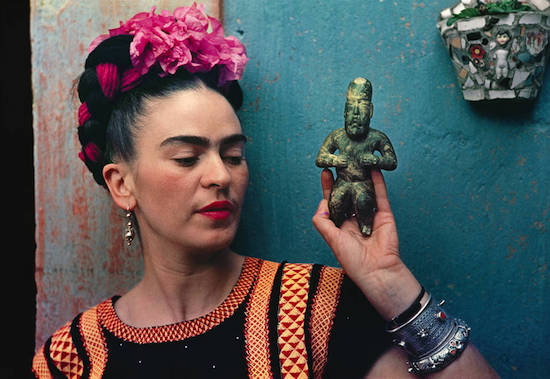On June 16th The Victoria and Albert Museum in London will have the unique distinction of being the first international venue to display Frida Kahlo’s personal collection of artefacts. The exhibition will offer, in the words of Senior Curator Claire Wilcox, “…a powerful insight into how Frida Kahlo constructed her own identity.” More than 200 items will be exhibited from her personal collection over the next five months. Sealed away by Diego Rivera upon her death, the collection was revealed in 2004 by her Estate. Visitors will have the opportunity to view Kahlo’s intimate belongings including her prosthetic right leg, medical (painted) corsets, twenty-two traditional hand stitched traditional tehuana costumes, pre-Columbian jewellery and Frida’s Revlon make-up including her ebony eyebrow pencil, and favourite lipstick, ‘Everything’s Rosy’.
Feminist. Activist. Artist. Icon. Frida Kahlo’s tempestuous life and career has been a source of inspiration for art lovers in recent years, from an Oscar winning Hollywood biopic in 2002 starring Salma Hayek through to the estimated 67,000 websites dedicated to her life and work. A leading artist specialising in Mexican Surrealism from the twenties, Kahlo was revolutionary in her candid depiction of personal tragedy, experimenting with images of death, (self-) destruction, national struggle, and gender identity.
Alongside her husband, the muralist Diego Rivera, she was a friend of Leon Trotsky who championed the Mexican Communist Party and the rights of indigenous workers during the Mexican renaissance period of the 1920s and 30s. But it was after a near fatal bus crash at the age of 18 that Kahlo, injured and immobilised from a crushed spine and pelvis, truly began to emerge as an artist of merit.
Producing emotive pieces from her home and studio at The Blue House situated in Coyoacán, on the outskirts of Mexico City, Kahlo created her first paintings in 1925 using a custom-made easel and mirror to capture herself at work from her bed. Frida not only depicted stark imagery of religious and communist ideology, but she also laid bare her personal trauma caused by the devastating aftermath of infidelity, miscarriage, divorce, and debilitating spinal injury.

Revlon compact and powderpuff with blusher in ‘clear red’ and Revlon lipstick in ‘Everything’s Rosy’
Emery boards and eyebrow pencil in ‘Ebony’. Before 1954. Photograph: Javier Hinojosa
©Diego Rivera and Frida Kahlo Archives
Circe Henestrosa, Head of the School of Fashion, LASALLE College of The Arts, Singapore, and lead curator of the exhibition considers the upcoming show at the V&A to be “a very personal experience with deeply individualised objects on show, particularly her corsets, which she decorated and painted, making them appear as though she had explicitly chosen to wear them. She included them in her art and in the construction of her style as an essential wardrobe item, almost as a second skin.”
Other garments to be displayed in the exhibition will include enaguas and holanes (long skirts with flounces) and resplandor, a lace head dress worn by women of the matriarchal society from the Isthmus of Tehuantepec region in Southern Mexico, which was worn by Frida in a self-portrait.

Guatemalan cotton coat worn with Mazatec huipil and plain floor length skirt. Museo Frida Kahlo
© Diego Rivera and Frida Kahlo Archives
Running alongside the exhibition, artist Margaux Carpentier will host two masterclasses at the V&A entitled The Colours of Mexico, coinciding with the official opening of the exhibition. Participants will create digital portraits using the same vibrant colours, textiles, patterns and techniques of Kahlo, inspired by ‘dreams’. “I liked the importance she gave to her surreal dreams through her art work, creating an invisible world which the spectator could identify with” says Margaux. “Many people are haunted by the same dreams, visions and ideologies. We’re constantly borrowing, reimagining what’s around us. The new V&A exhibition is a tribute to her Mexican ancestry, art & craft, and her individuality as a feminist activist who protested against the bourgeois Mexican society she moved in. I love Mexican mythology taken from the Maya cities of Yucatan, the numerous museums of pre-Hispanic art, contemporary murals and hand painted signs found around every corner of Mexico.”
Kahlo’s image, has not been without controversy. In March 2018, Mattel paid ‘tribute’ as part of their Inspiring Women Series by releasing a Kahlo doll without her trademark monobrow or use of traditional Mexican dress. Facing the wrath of Kahlo’s great niece, Mattel argued that they had the full cooperation of the Panama-based Frida Kahlo Corporation.
Margaux has mixed emotions about the depiction of such an iconic figure in the 100th year of the woman’s vote. “I guess it’s not a bad thing to have someone like Frida Kahlo modelled into the famous toy instead of some disproportionate, over-sexualised stereotype. I like Frida Kahlo’s visual universe and love the colours, patterns and myths of Mexico. However, I find the idea of her image being used as a product disturbing and annoying. I doubt Miss Kahlo would have liked the idea of being turned into a plastic toy symbolising everything she politically and ideologically rejected.”

Prosthetic leg with leather boot. Appliqued silk with embroidered Chinese motifs
Photograph: Javier Hinojosa. Museo Frida Kahlo. ©Diego Rivera and Frida Kahlo Archives
141 Ebury Street, Belgravia, introduced Frida’s Parlour from May to June ahead of the exhibition. A pop-up installation, the parlour styled itself on Kahlo residence, La Casa Azul, allowing the public to create head dresses, self-portraits, and flower arrangements. Margaux acknowledges her enigmatic quality: “Frida Kahlo became an icon because her work, personal life, and strict attention to fashion stood out from her contemporaries. She combined all the things that people want to be like in one person. Frida’s bold use of colours, as bright and vibrant as Mexico itself is really relevant to the contemporary illustrative trend seen today which is part of her enduring appeal.”
Frida Kahlo, Making Her Self Up is at the V&A from 16 June until 4 November 2018. Frida’s Parlour is at 141 Ebury Street SW1W 9QW until 16 June


